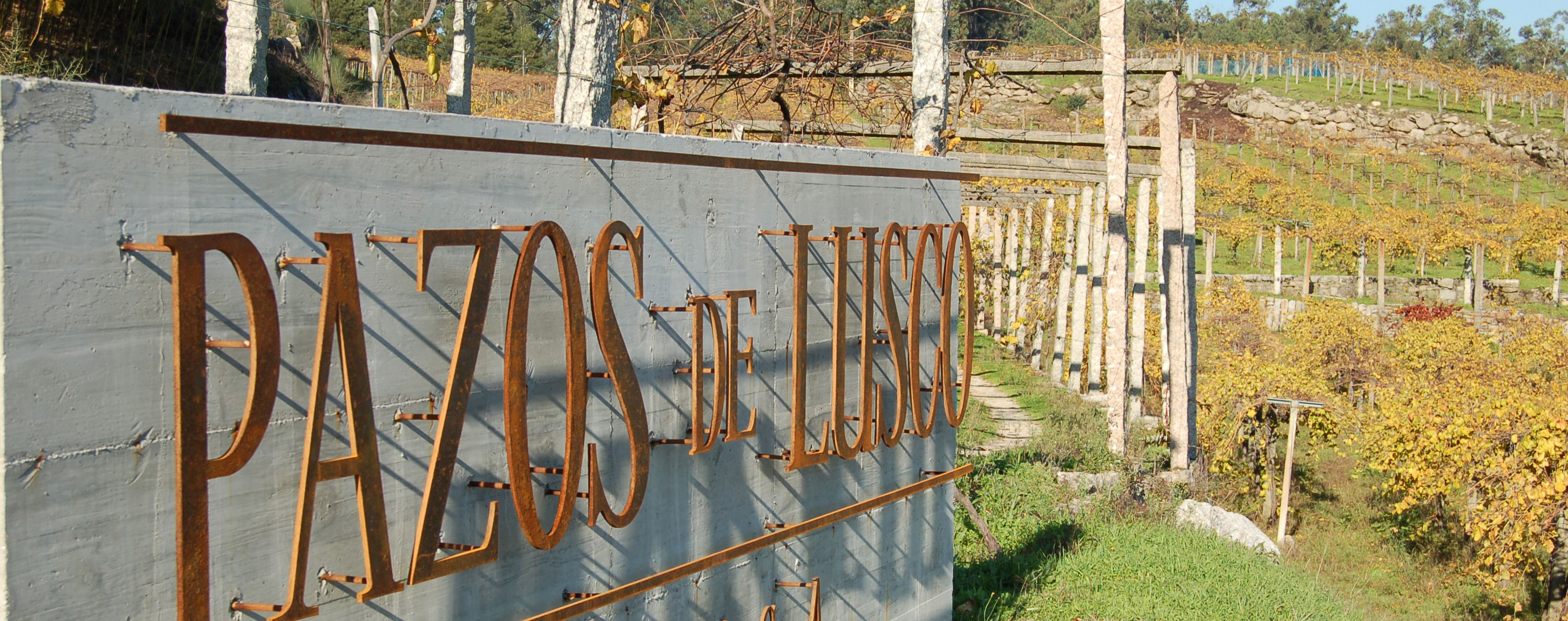The result is two very different styles of Albariño. The main feature of both, however, is the sharp acidity that gives the variety its trademark freshness and minerality.
Sergio is the winemaker at González Byass’ Albariño specialist, Adega Pazos de Lusco, in northwest Spain.
Pazos de Lusco in Salvaterra do Miño is in the heart of the Rías Baixas region, in the subzone of Condado do Tea and close to the border with Portugal. It’s an inland region, typically producing richer and fuller styles than those produced closer to the coast and the cold waters of the Atlantic Ocean.
The winery is near Pazo Piñeiro, a majestic 16th century ‘pazo’ (country house) surrounded by 5ha (12 acres) of Albariño. Pazos de Lusco produced its wines here until 2009, when the tanks and barrels were transferred to a new, modern, and functional winery nearby.
Sergio says the wines are produced using traditional methods – the aim being to realise all the potential from each and every pago (plot), while respecting the character of the indigenous variety.
Pazos de Lusco grows about 30% of the grapes it needs. Via a Zoom call, Sergio says they would like to increase their output, but stiff competition for the grapes is pushing up prices “at a very aggressive rate”.
Lusco Albariño 2021

With the Lusco Albariño 2021, they are trying to produce a white wine with “the characteristics that you will find in a more traditional style of Albariño,” according to Sergio. “We have seen a lot of new and modern takes of Albariño but this is a way to go back to the roots.”
Variety: 100% Albariño
Volatile acidity: 0.4g/L
Total acidity: 6.3g/L
Residual sugar: 3.3g/L
pH: 3.4
ABV: 13%
- The grapes were handpicked from a mixture of old and young vines trained in the traditional pergola system – on high trellises to maximise sun exposure and increase air circulation (to maintain perfectly healthy bunches).
- The grapes were transported in small boxes to keep the berries intact.
- The 2021 harvest started on August 27 and continued until the second week of September. Historically, the typical start date was the second week of September.
- The purchased grapes are sorted on a table.
- Vinification is pago by pago (plot by plot) “to respect the identity of the terroir”.
He explains to Canopy: “During the cold macerations, what we find positive is that the final result is wines with more structure, not so fresh and cheerful but more serious and rounder. On the nose we find them not so fruity, but more floral. They enhance the primary aromas more. In the end, what we try to do is make a mix of all this to arrive at the final result of Lusco.”
- Fermentation is in tanks.
- From 2015-2018 they relied on spontaneous fermentations, “but what we saw was the result can be a little unpredictable, so from 2018 what we did was to extract the specific yeast that we wanted to work with from our own grapes and we have kept on using that specific yeast. This means that we have found a stability in the wine. Of course, the different notes and the different nuances of each vintage will still change but at least there is a base line between all the different vintages,” Sergio points out.
- By harvesting their own grapes first, they can make a pied de cuve to seed the fermentations of all the purchased grapes that arrive in the winery.
- After fermentation, the wines undergo six months’ ageing on lees to “give structure and full-bodied-ness”, and to produce wines that “linger on the palate without losing their freshness”.
“Something beautiful about this wine is that if you were to visit the winery and see the area, everything that you find in nature is what you find on the nose of this wine. It has these golden apples, pears but also white flowers and different herbs,” Sergio says.
He believes the important thing about this wine is that the acidity has to be “very marked. If not, it wouldn’t be an Albariño. But, at the same time, we can feel that it’s very round, it’s very smooth and even though it was bottled in February last year, it’s still very alive. So, this life that you find in the wine – these citric notes and this marked acidity – is something that keeps it alive and makes sure that it is alive on the palate.”
Pazo Piñeiro 2020

The single-vineyard Pazo Piñeiro 2020 is a very different wine. It is fermented and aged in oak, and sees significantly longer ageing overall.
“The challenge with this wine,” according to Sergio, “is finding the balance between the oak and the fruit. How much character of the fruit do you want compared to how much oak you are providing to the wine?”
Grape variety: 100% Albariño
Total acidity: 6.5g/L
Volatile acidity: 0.6g/L
Residual sugar: 1.9g/L
pU: 3.39
ABV: 13.5%
- The “best of the best grapes” were selected from a single vineyard with simple cordon trellising.
- The vines – more than 35 years old – were harvested in early September.
- Following a short maceration, the grapes were gently pressed “to maintain the varietal flavours”.
- The fermentation took place in French oak barrels of 300 and 500L using native yeasts.
- The wine was aged on lees for nine months, before going into a tank (with the lees) for a further five months.
Pale yellow in colour, this wine has powerful aromas of fresh herbs, bay leaves, eucalyptus, floral notes and citrus. There are also some slight toasted notes with touches of baked apple. On the palate, it is dry with a citric character, and prevailing grapefruit and pineapple flavours that provide the wine with liveliness and freshness. The finish is long and very persistent.













.png)






